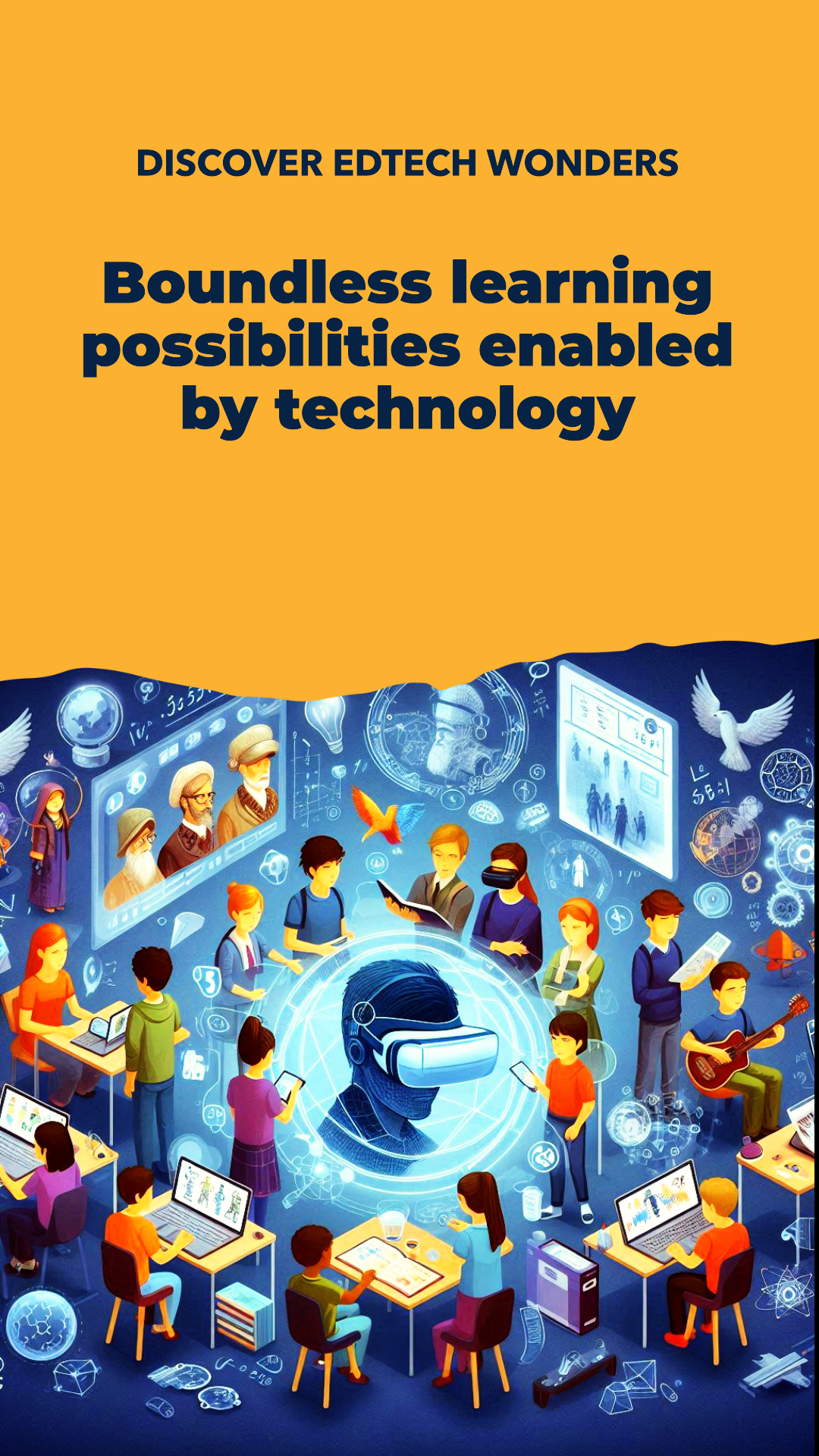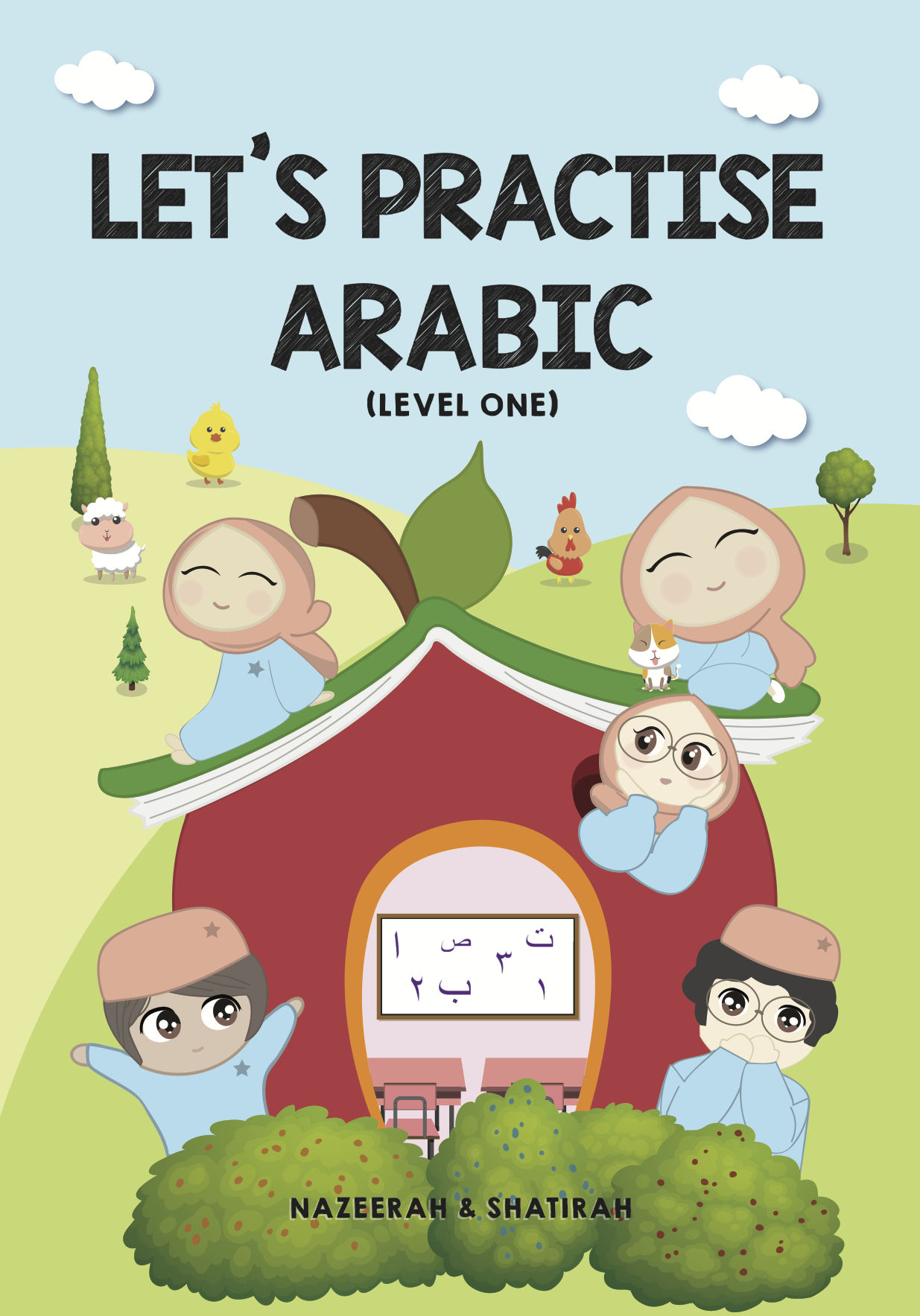I. Introduction
Imagine a third-grader named Sarah struggling to grasp the concept of photosynthesis. Traditional textbook diagrams and lectures left her confused and disengaged.
Then, one day, her teacher introduced a virtual reality app that allowed Sarah to shrink to the size of a plant cell. As she navigated through the chloroplasts, watching the process unfold around her, Sarah’s eyes lit up with understanding.
This is the wonder of Educational Technology (EdTech) – transforming abstract concepts into tangible experiences and igniting a passion for learning. It’s a world of learning beyond boundaries that we’re just beginning to explore, and it’s filled with excitement and endless possibilities.
Today’s education is in the midst of a digital revolution. The integration of technology and learning is reshaping the landscape, making education more interactive, personalized, and accessible than ever before (U.S. Department of Education, 20171). However, some may have concerns about the cost of implementing these technologies, the potential for distraction, or the perceived lack of personal interaction.
As parents and educators, it’s important for us to address these concerns and find ways to mitigate them while still embracing these innovations to equip our children for a future where technology and learning are inseparable.
II. The Rise of EdTech
The education sector has witnessed a seismic shift in recent years, with technology playing an increasingly central role in teaching and learning. According to a recent HolonIQ (20212) study, the global EdTech market is projected to reach $404 billion by 2025, growing at a 16.3% compound annual growth rate.
This staggering growth is not a coincidence, but a testament to the effectiveness of technology in enhancing learning outcomes. It’s a reassurance that we’re on the right path, embracing a transformative tool that will shape the future of education and that our efforts are not in vain.
The rise of EdTech is about more than just digitizing textbooks or moving classes online. It represents a fundamental shift from passive to active learning. Instead of sitting quietly and absorbing information, students are now encouraged to interact, experiment, and create.
This shift aligns perfectly with modern pedagogical approaches emphasizing critical thinking, problem-solving, and creativity – skills essential for success in the 21st century (World Economic Forum, 20203).
III. Virtual Reality (VR) in Education
One of the most exciting developments in EdTech is the integration of Virtual Reality (VR) into the classroom. VR technology allows students to immerse themselves in virtual environments, bringing abstract concepts to life in previously unimaginable ways (Radianti et al., 20204).
Imagine a history class in which students can walk through the streets of ancient Rome, observing its citizens’ architecture and daily life.
Or a biology lesson in which students can journey through the human bloodstream, watching white blood cells combat invading pathogens in real-time.
These are not futuristic scenarios—they’re happening in classrooms today.
For instance, at Baylor University in Texas, students in undergraduate-level science courses are using a VR application called “Journey Inside the Cell” to explore cellular biology. This immersive experience allows students to navigate through a 3D model of a human cell, observing organelles and cellular processes in real-time. The program has been particularly effective in helping students understand complex concepts like protein synthesis and cellular respiration.
According to Dr. Brian Raines, a professor at Baylor who helped implement the program, “Virtual reality allows students to interact with cellular structures in a way that’s impossible with traditional teaching methods. They can literally walk through a cell membrane or watch ribosomes assemble proteins. It’s transforming how we teach and how students learn biology” (Baylor University, 20225).
The power of VR lies in its ability to create memorable, multi-sensory learning experiences. Research has shown that immersive experiences can significantly improve information retention and understanding, particularly for visual and kinesthetic learners.
For instance, a study by the University of Maryland found that people recall information better when presented in VR than traditional desktop displays (Krokos et al., 20196).
Moreover, VR is proving particularly effective in teaching spatial awareness and abstract concepts. In mathematics, for example, students can manipulate 3D geometric shapes in virtual space, gaining an intuitive understanding of volume and surface area that’s difficult to achieve with 2D representations (Innocenti et al., 20197).
IV. Interactive Simulations: Bringing Learning to Life
While VR offers immersive experiences, interactive simulations provide hands-on learning opportunities previously limited by practical constraints. These digital tools allow students to experiment, make mistakes, and learn in a safe, controlled environment (de Jong et al., 20138).
Take, for instance, a high school physics class studying electrical circuits. Traditionally, students might work with physical components, which are limited by the availability of materials and the risk of errors damaging equipment. With an interactive simulation, students can build complex circuits, instantly see the flow of current, and experiment with different configurations without any real-world limitations.
The beauty of these simulations lies in their ability to make the invisible visible. Students can observe the movement of molecules in different states of matter, watch chemical reactions unfold step-by-step, or see the long-term effects of environmental changes on ecosystems. This visualization of abstract concepts helps bridge the gap between theory and practice, making learning more engaging and effective (Rutten et al., 20129).
Moreover, simulations provide broader access to advanced experiments. Schools that may need more money for expensive lab equipment can still offer their students rich, hands-on learning experiences through these digital tools. This levels the playing field, ensuring that all students, regardless of their school’s resources, can engage in meaningful scientific inquiry (National Research Council, 201110).
V. Educational Apps: A Classroom in Your Pocket
The proliferation of smartphones and tablets has ushered in a new era of learning-on-the-go. Educational apps have transformed these devices into powerful learning tools, allowing students to learn anytime, anywhere.
There’s an app for almost every educational need, from language learning to complex mathematical problem-solving.
Duolingo, one of the most popular educational apps, has revolutionized language learning. With over 500 million downloads worldwide, it uses gamification techniques to make language acquisition engaging and addictive (Duolingo, 202311).
Similarly, apps like Photomath use artificial intelligence to solve complex mathematical problems step-by-step, helping students understand the process rather than just providing answers.
The power of these apps lies in their ability to provide immediate feedback and personalized learning experiences. Research has shown that such immediate feedback can significantly improve learning outcomes (Hattie & Timperley, 200712). Moreover, the gamification elements often incorporated in these apps can increase motivation and engagement, making learning feel less like a chore and more like play (Dicheva et al., 201513).
VI. Personalized Learning Through Technology
One of the most significant advantages of EdTech is its ability to tailor learning experiences to individual students’ needs. Adaptive learning platforms use sophisticated algorithms to assess a student’s performance in real-time, adjusting the difficulty and content of lessons accordingly.
For instance, platforms like Carnegie Learning’s MATHia use AI to provide personalized math instruction. As students work through problems, the system analyzes their responses. It adjusts the curriculum to address their specific strengths and weaknesses (Carnegie Learning, 202314).
This level of personalization was virtually impossible in traditional classroom settings but is now becoming increasingly common thanks to EdTech.
We encourage you to explore these technologies and consider how they can enhance your child’s learning experience. Talk to your child’s teacher about incorporating EdTech into the curriculum or explore educational apps that align with your child’s interests and learning needs.
Research has shown that such personalized learning approaches can significantly improve student achievement. A study by the RAND Corporation found that students in schools using personalized learning approaches made greater gains in math and reading compared to their peers in traditional schools (Pane et al., 201515).
VII. Artificial Intelligence in Education
Artificial Intelligence (AI) is rapidly becoming a game-changer in education. AI enhances various aspects of the learning process, from intelligent tutoring systems to automated grading.
AI-powered tutoring systems, such as Third Space Learning, provide students with one-on-one support, offering instant feedback and personalized instruction (Third Space Learning, 202316). These systems can identify areas where a student struggles and provide targeted interventions, effectively serving as a tireless, always-available tutor.
Furthermore, AI is helping to automate administrative tasks, freeing up teachers to focus more on instruction and student interaction. For example, AI-powered systems can grade multiple-choice tests, check for plagiarism, and even provide initial assessments of essays, allowing teachers to spend more time on high-value activities like giving detailed feedback and one-on-one instruction (Luckin et al., 201617).
VIII. Collaborative Learning in the Digital Age
EdTech is not just about individual learning experiences; it’s also revolutionizing how students collaborate. Digital platforms are breaking down geographical barriers, allowing students worldwide to collaborate on projects and share ideas.
For example, the Global Learning and Observations to Benefit the Environment (GLOBE) Program, supported by NASA and NSF, connects students worldwide to participate in data collection and scientific research (GLOBE, 202318). Such initiatives not only improve students’ grasp of scientific concepts but also promote cross-cultural understanding and global citizenship.
Tools like Google Workspace for Education facilitate real-time collaboration, allowing students to work together on documents, presentations, and projects regardless of their physical location.
This mirrors the collaborative work environments students are likely to encounter in their future careers, preparing them for the realities of the modern workplace (Blau & Shamir-Inbal, 201719).
IX. Accessibility and Inclusion
One of the most profound impacts of EdTech has been its ability to make education more accessible and inclusive. For students with disabilities, technology has opened up new avenues for learning and participation.
Text-to-speech and speech-to-text technologies, for instance, have been game-changers for students with reading or writing difficulties. These tools allow students to access content and express their ideas more quickly, leveling the playing field in the classroom (McKnight & Davies, 201220).
Moreover, online learning platforms have made quality education accessible to students in remote areas or those unable to attend traditional schools due to physical or health limitations. The COVID-19 pandemic highlighted the importance of these technologies in ensuring educational continuity during times of crisis (UNESCO, 202021).
X. Conclusion
As we’ve explored throughout this post, Educational Technology is profoundly transforming the learning landscape. From virtual reality field trips to AI-powered tutors, from personalized learning algorithms to global collaborative projects, EdTech is making education more engaging, effective, and accessible than ever before.
However, it’s important to remember that technology is a tool, not a replacement for good teaching. The most effective use of EdTech comes when it’s thoughtfully integrated into well-designed curricula and guided by skilled educators.
As parents and educators, we must embrace these technologies while ensuring a balanced approach to education. By doing so, we can help prepare our children not just to survive but to thrive in the digital future that awaits them.
The journey of education is evolving, and EdTech is our vehicle to explore new learning horizons. Let’s embark on this exciting journey together, unlocking the vast potential of every learner along the way.


